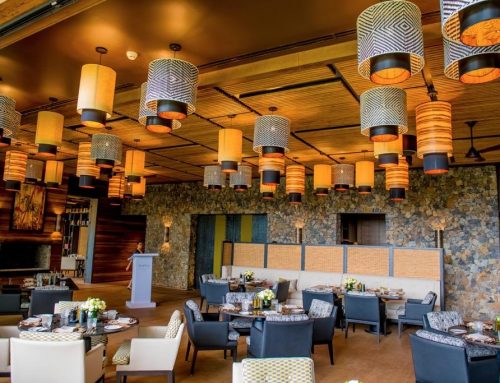Mountain gorillas have survived up today thanks to Dian Fossey, who is buried at her research center in the Virungas alongside the animals to which she dedicated her life. Fossey became a household name following the release of the biographical film Gorillas in the Mist, set and shot on location in the Parc National des Volcans. Critical and public acclaim ensured that Gorillas in the Mist also served to raise international awareness of the plight of the mountain gorilla.
Trek to see them and you will be introduced by your expert trackers and guides to one of the fully-habituated families of mountain gorillas and you can stay with them for an awe-inspiring hour, often crouching just a few feet away, whilst the gorillas go about their daily lives.
Getting there
From Kigali, you need to get to Musanze which is a 90 minute drive from Rwanda’s capital city, Kigali. You can either hire a private care or take a public taxi minibus. From there, you need to get to Kinigi, where the trip begins. Vehicles can be hired for this purpose in Musanze town.
On the day of you are scheduled to trek, you must present yourself for briefing at the RDB Tourism & Conservation offices situated at the prefecture offices in Kinigi at 7:00 AM.
Climate:
The climate in Musanze is changeable and you can generally expect both sun and rainfall during the day. At 1,700m above sea level, the city is generally quite cold, particularly in the evening, so warm clothing is advised.
What to wear:
Recommended clothing is long trousers and shirts when in the forest to avoid nettle stings. Steady walking shoes or hiking boots are essential. Rain gear useful.
What else to bring:
Bring a water bottle and a small snack although eating, drinking and smoking near the gorillas is forbidden. Don’t forget your camera!
Porters:
Porters are available to help you carry your day pack for a small charge at a cost of USD
Fitness:
Mountain gorillas live at high altitude and this may cause difficulties for some visitors. You should walk slowly and drink plenty of water. No one should feel deterred from making this trip.
Gorilla Guidelines
There are several guidelines that RDB kindly requests all visitors adhere by:
To minimize possible transmission of human diseases, visitors are asked to maintain a distance of 7m (about 22 feet) from the gorillas. If you are sick with a cold, flu or other contagious illness, please do not visit the gorillas.
Viewing time is limited to one hour.
Maximum 8 visitors per group.
Spitting in the park is strictly prohibited.
Should you need to cough, cover your mouth and turn away from the gorillas.
When with the gorillas, keep your voice low.
Try not to make rapid movements that may frighten the gorillas.
If a gorilla should charge or vocalize at you, do not be alarmed, stand still, look away from the gorilla and follow your guide’s directions.
Do not litter.
Tracking can be done by persons of age 16 and above.
Expert guides give a pre-trek briefing on specific protocols and rules for visiting the gorillas that live within an altitude of 2500 and 4000m. Porters are available to help carry backpacks and cameras, as well as helping you with your footing along your hike which can be hard work, but well worth it and for this experience visit our website.
Gorilla Families
There are ten families living in the Volcanoes National Park that are fully habituated and available for visits by the public (whilst others are habituated for scientific research purposes only) . Each family consists of at least one Silver back (but sometimes as many and four), along with several females and a group of youngsters.
Susa: The largest group with 38 gorillas. They’re hardest to trek as they tend to range high into the mountains. They have rare 5 year old twins named Byishimo and Impano.
Sabyinyo: 17 members Sabyinyo is an easily accessible group led by the powerful silver back Guhonda.
Amahoro: 19 gorillas, led by the calm and easy going Ubumwe. To reach Amahoro it’s usually a fairly steep climb but it is well worth it!
Agashya: (formerly known as Group 13) today it has 22 members – a very positive sign for conservation.
Kwitonda: 23 members led by Akarevuro, originally habituated in DRC so they tend to range quite far making it a moderately difficult trek.
Umubano: a family of 13, who broke off from Amahoro with leader, Charles,
Hirwa: this group has 18 members and only fairly recently formed from former Group 13 and Sabyinyo family members. They are led by Munyanga.
How the trek can be
Hikes in the mountains can last anywhere from 30 minutes to 7 hours + depending on the family allocated to your group and their location. The journey back can take just as long, but you are often carried along by the euphoria you feel at seeing the gorillas!


Leave A Comment